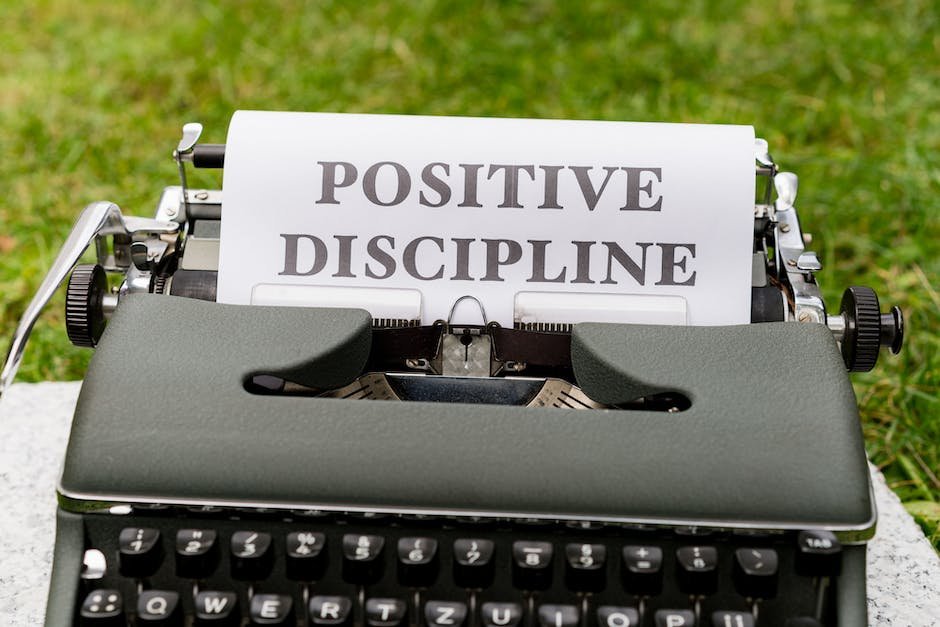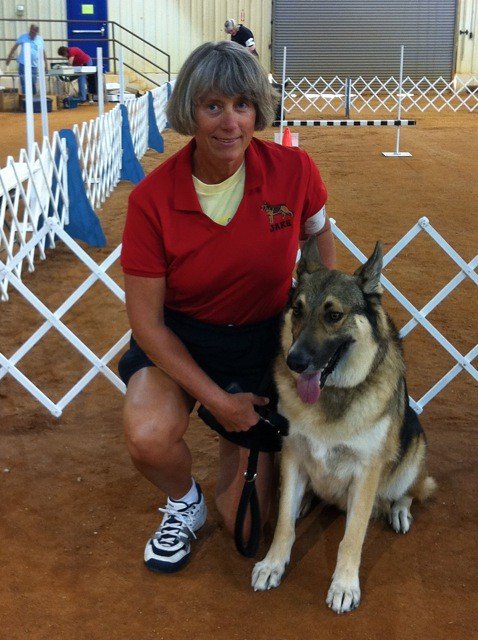Do you often find your four-legged companion eagerly pulling at the leash during your daily walks? Perhaps their enthusiasm for exploration leaves your arm feeling strained in a perpetual tug-of-war. If this sounds familiar, rally obedience may be the ideal solution for both you and your beloved pup. Rally obedience, a sport that showcases the close bond between dog and owner, combines obedience commands with a fun and challenging twist. In this article, we will delve into the fascinating world of rally obedience and offer you valuable insights and tips on how to prepare your dog for this exciting endeavor. So, grab your furry friend, slip on your training shoes, and let’s embark on a journey towards disciplined wagging tails and synchronized paws.
Table of Contents
- Setting Goals and Establishing a Training Schedule
- Designing Effective Training Exercises and Routines
- Building Focus and Concentration through Positive Reinforcement
- Mastering Rally Obedience Techniques and Commands
- Fine-tuning Performance with Mock Trials and Simulated Competitions
- Q&A
- In Retrospect

Setting Goals and Establishing a Training Schedule
When it comes to achieving success in any endeavor, setting goals is a crucial first step. Whether you’re embarking on a fitness journey or training for a marathon, having clear and achievable goals provides a roadmap for progress. Start by defining what you want to accomplish, whether it’s losing a certain amount of weight, improving your strength, or increasing your endurance.
Once you have established your goals, it’s time to establish a training schedule that will help you stay on track. Consistency is key, so it’s important to find a routine that works for you and stick to it. Consider incorporating a mix of cardiovascular exercises, strength training, and flexibility exercises into your schedule to ensure a well-rounded training program.
- Track your progress: Keep a journal or use a fitness app to track your workouts, noting the duration, intensity, and any milestones achieved. This will not only help you monitor your progress but also provide motivation when you see how far you’ve come.
- Set milestones: Break down your overall goal into smaller, achievable milestones. Celebrating these mini victories along the way will keep you motivated and excited to continue your training.
- Listen to your body: It’s crucial to pay attention to how your body feels during training. Adjust your schedule or modify exercises as needed to prevent injuries and avoid burnout. Remember, rest and recovery are just as important as the actual training.
By setting well-defined goals and establishing a training schedule that suits your lifestyle, you are laying the foundation for success in your fitness journey. Remember, progress may not always be linear, and setbacks are a natural part of the process. Stay committed, stay focused, and most importantly, enjoy the journey!

Designing Effective Training Exercises and Routines
When it comes to creating impactful training exercises and routines, it’s important to consider a few key elements to ensure maximum effectiveness. Here are some guidelines to keep in mind:
- Identify clear objectives: Before designing any exercise or routine, it is crucial to establish clear goals and objectives. Outline what skills or knowledge you want participants to acquire or improve.
- Variety and progression: Keeping participants engaged and motivated is key to successful training. Introduce a variety of exercises and routines, ensuring a balanced mix of endurance, strength, flexibility, and skill-based activities. Gradually increase the difficulty to facilitate progression.
- Interactive and collaborative: Incorporate interactive elements and encourage collaboration among participants. Group discussions, team challenges, and peer-to-peer feedback can enhance the learning experience and foster a supportive environment.
- Adaptability: Training exercises and routines should be adaptable to different skill levels and individual needs. Create options or modifications for participants with varying abilities, ensuring everyone can participate and progress at their own pace.
- Measurement and feedback: Regularly assess participant progress and provide feedback. Use objective measurements, such as timed activities or skill assessments, to track improvement. Share feedback in a constructive and supportive manner to encourage further development.
By following these guidelines, you can design training exercises and routines that effectively engage participants, facilitate learning, and empower them to reach their full potential.

Building Focus and Concentration through Positive Reinforcement
Positive reinforcement is a powerful tool when it comes to building focus and concentration. By rewarding desired behaviors, we can help rewire our brain to stay focused and on task.
One effective method is to establish a reward system that encourages concentration. Create a list of tasks or goals that need to be accomplished, and assign a point value to each one. As individuals successfully complete these tasks, they can earn points that can later be exchanged for rewards. This not only incentivizes focus but also helps individuals stay motivated and engaged.
Additionally, incorporating mindfulness techniques can greatly enhance concentration. Encourage individuals to practice deep breathing exercises or meditation to improve their ability to focus. Highlight the importance of breaking tasks into smaller, manageable chunks to maintain productivity and mental clarity throughout the day. With consistent practice, individuals can establish a positive mindset and develop long-lasting concentration skills.
Remember, requires patience and consistency. By implementing these strategies, individuals can gradually strengthen their ability to stay focused and reap the benefits of enhanced productivity and success.
Mastering Rally Obedience Techniques and Commands
Rally obedience is a thrilling sport that combines elements of agility, obedience, and precision. With its fast-paced nature and intricate course designs, it’s no wonder why rally obedience has captured the hearts of both dogs and their handlers. To truly excel in this discipline, it’s essential to master a variety of techniques and commands that help create a seamless partnership between you and your furry teammate.
Here are some key techniques and commands that will take your rally obedience skills to the next level:
- Heel Command: A solid heel command serves as the foundation for a successful rally obedience performance. Teach your dog to walk calmly and attentively next to you, maintaining eye contact and matching your pace.
- Focus Command: Developing your dog’s focus is crucial during a rally obedience routine, as distractions often abound. Train your pup to eagerly maintain eye contact with you and remain engaged despite tempting distractions or noises.
- Left and Right Turns: Precise turns are a significant component of rally obedience. Mastering the cues for left and right turns will contribute to the flow and accuracy of your performance. Practice smooth and sharp turns with your dog, ensuring they respond promptly to your cues.
- Stationary Exercises: Rally obedience courses often include various stationary exercises such as sits, downs, and stands. Build a rock-solid foundation in these commands, ensuring your dog can confidently perform them in different situations and positions.
- Hand Signals: Incorporating hand signals into your rally obedience routine can enhance communication with your dog, adding precision and flair to your performance. Teach your dog to respond to subtle hand cues and gradually increase the complexity of the signals.
Remember, requires patience, consistency, and dedicated practice. Continuously challenge and reward your dog, making training sessions enjoyable and enriching. With perseverance and a strong bond between you and your four-legged partner, the thrill of mastering rally obedience is within reach.
Fine-tuning Performance with Mock Trials and Simulated Competitions
In the pursuit of excellence, honing one’s skills and strategies is of utmost importance. To achieve this, nothing offers a better opportunity for improvement than mock trials and simulated competitions. These powerful tools bring together professionals, aspiring students, and enthusiasts to engage in lifelike scenarios that replicate real-world challenges.
By participating in mock trials and simulated competitions, individuals are provided with a platform to showcase their expertise, train under realistic conditions, and receive valuable feedback from experienced judges and peers. These environments not only allow participants to refine their performance but also build confidence and tactical thinking, enabling them to face challenges head-on in actual competitions or professional settings. Through lively and intelligent exchanges, individuals gain a deeper understanding of their strengths and weaknesses, ultimately helping them reach their full potential.
Benefits of Mock Trials and Simulated Competitions:
- Opportunity to practice and refine legal or professional techniques.
- Enhanced critical thinking and problem-solving abilities.
- Valuable feedback from experienced judges and peers.
- Development of teamwork and collaboration skills.
- Boost in confidence and self-assurance.
So, whether you’re preparing for a courtroom battle or striving to outshine your competitors, engaging in mock trials and simulated competitions is an indispensable aspect of your journey towards success. Unlock your true potential and witness the growth that arises from these immersive experiences! Together, let’s embark on a path that molds us into exceptional professionals.
Q&A
1. Can any dog participate in rally obedience?
Yes, rally obedience is a sport that welcomes dogs of all breeds, sizes, and ages. As long as your dog is physically fit and has some basic obedience training, they can participate in rally obedience.
2. What are some essential skills my dog should have before starting rally obedience training?
To prepare your dog for rally obedience, they should have a good understanding of basic commands such as sit, stay, and heel. It’s also beneficial if they are comfortable walking on a leash and following your lead.
3. How can I introduce my dog to the concept of rally obedience?
Start by slowly introducing your dog to rally obedience exercises and commands, making it a fun and positive experience. Use treats, toys, and praise to reinforce their good behavior, and gradually increase the difficulty level of the exercises.
4. What equipment do I need for rally obedience training?
The basic equipment you’ll need includes a sturdy collar or harness, a leash, and treats or toys as rewards. It’s also helpful to have some rally obedience signs, which can be purchased or made at home, to practice the specific exercises.
5. How should I structure my rally obedience training sessions?
Keep your training sessions short and focused, around 10-15 minutes, to maintain your dog’s attention and prevent them from getting bored. Break down the exercises into smaller steps, rewarding your dog for each success, and gradually string them together for longer sequences.
6. Can I use clicker training for rally obedience?
Yes, clicker training can be a valuable tool in rally obedience. With proper timing, you can use the clicker to mark your dog’s correct responses and follow it up with a treat or reward, reinforcing their understanding of the exercises.
7. How can I motivate my dog to perform well in rally obedience competitions?
Find what motivates your dog, whether it’s treats, praise, or play, and use it as a reward during training sessions. Make the training fun and engaging, and gradually introduce distractions to prepare your dog for the challenging environment of a competition.
8. Are there any common mistakes to avoid when training for rally obedience?
Avoid rushing through the training process and be patient with your dog. It’s important to use positive reinforcement and avoid punishment-based training methods. Additionally, keep in mind that consistency and practice are key for success in rally obedience.
9. How should I prepare my dog for their first rally obedience competition?
Before entering a competition, ensure your dog is confident and comfortable with the exercises. Practice in different environments and gradually increase distractions. Additionally, acquaint yourself with the competition rules and regulations to be fully prepared.
10. What are the benefits of participating in rally obedience?
Participating in rally obedience strengthens the bond between you and your dog, provides mental stimulation, and helps improve their obedience skills. It’s also a great opportunity to socialize with other dog owners who share the same passion for training and competing.
In Retrospect
As we conclude this journey towards rally obedience perfection, we hope your heart fills with excitement and your canine companion’s tail wags with anticipation. It has been an honor to guide you through the labyrinth of skills and techniques needed to prepare your beloved pooch for the thrilling world of rally obedience.
Remember, dear reader, that this endeavor is not measured solely by shiny gold medals or triumphant applause. The true victory lies in the bond you solidify with your four-legged friend, built on trust, communication, and mutual understanding. Rally obedience is an art that encompasses far more than mere obedience commands; it is a dance between human and dog, guided by a symphony of teamwork and companionship.
With time, patience, and perseverance, you have transformed your loyal companion into a skilled athlete, poised to conquer the rally obedience realm. From completing the beginner’s course to mastering advanced maneuvers, your dedication and commitment have not gone unnoticed.
As you enter the dazzling ring of rally obedience trials, remember to savor every moment. Embrace the vibrant atmosphere, the electrifying energy, and the camaraderie shared amongst fellow enthusiasts. Celebrate the small victories and cherish the lessons learned from each challenge faced. Rally obedience is not merely a competition, but a beautiful tapestry woven from the threads of love and devotion.
And should you stumble along the way, do not despair. Every stumble is an opportunity to grow, every setback a chance to reevaluate and improve. Remember that even the greatest of champions started as novices, unsure and unsteady. It is your steadfast commitment and unwavering belief in your four-legged partner that will carry you towards achievement.
So, as the sun sets on this article and you prepare to embark on your rally obedience adventure, we leave you with one final piece of advice – trust the process and trust your dog. For in rally obedience, as in life itself, success lies not only in the destination but in the joyous journey you share with your beloved canine companion.
Now, dear readers, it is time to take a deep breath, fasten your training collar, and step into the magnificent world of rally obedience. The stage is set, the lights are on, and it is your turn to shine. May your steps be graceful, your focus unyielding, and your bond with your furry companion unwavering. Rally obedience awaits; let the dance begin.
As an affiliate, my content may feature links to products I personally use and recommend. By taking action, like subscribing or making a purchase, you’ll be supporting my work and fueling my taco cravings at the same time. Win-win, right?
Want to read more? Check out our Affiliate Disclosure page.